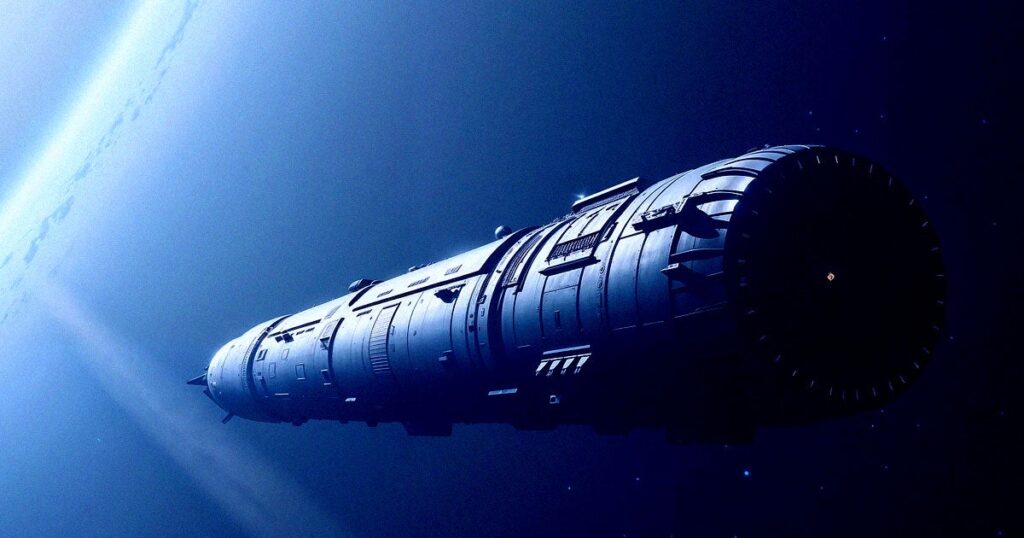
A team of visionary engineers has unveiled designs for a groundbreaking 36-mile spacecraft named Chrysalis, capable of transporting up to 2,400 passengers to Alpha Centauri, the nearest star system to our own. This ambitious concept recently secured the top prize at the Project Hyperion Design Competition, initiated by an international consortium of scientists, engineers, and urban planners.
The announcement comes as humanity continues to explore the possibilities of interstellar travel, a concept that has long captured the imagination of scientists and science fiction enthusiasts alike. Chrysalis, with its rotating structure to generate Earth-like gravity, is a testament to this fusion of imagination and engineering prowess.
Inside the Chrysalis: A Self-Sustaining Space Habitat
The Chrysalis design features several concentric layers, each serving a unique function within the spacecraft’s ecosystem. The innermost layer is dedicated to food production, housing plants, microbes, livestock, and other essential elements for sustaining life. This layer supports biodiversity with environments ranging from tropical to boreal forests.
Meanwhile, the second layer is designed for communal spaces, fostering social interaction and community life. The third layer contains “3D-printed dwelling modules,” providing living quarters for the inhabitants. The outermost shell functions as a storage area for machinery and resources necessary for the spacecraft’s operation.
“Through the transparent panels of the dome, the inhabitants will be able to observe the universe to the rear of the spaceship,” the project brief reveals.
The Cosmos Dome: A Window to the Universe
One of the most striking features of Chrysalis is the “Cosmos Dome,” a vast structure providing a zero-gravity environment, thermal insulation, and protection from deep space radiation. This dome is the only place within the spacecraft where inhabitants can experience weightlessness while observing the cosmos through transparent panels.
The design also incorporates a generational approach to population management. Inhabitants are given a three-year window between the ages of 28 and 31 to reproduce, with a two-child limit per person, ensuring a stable population of approximately 1,500 individuals over three generations. An integrated artificial intelligence system is proposed to enhance social resilience and knowledge transfer across generations.
The Challenges Ahead: From Science Fiction to Reality
Despite the detailed vision, Chrysalis remains firmly in the realm of science fiction. The concept relies on nuclear fusion reactors, a technology that has yet to be realized practically on Earth. Additionally, the construction of a structure spanning tens of miles in zero gravity presents unprecedented engineering challenges.
Current technological limitations include the lack of practical nuclear fusion and the untested concept of artificial gravity through centrifuge mechanisms.
However, proponents argue that exploring such concepts is crucial, especially in light of potential existential threats to humanity’s future on Earth. The development of generational ships like Chrysalis could offer a lifeline for human civilization, providing a means to escape planetary disasters.
The move represents a bold step in envisioning humanity’s future beyond our solar system, highlighting the importance of continued research and innovation in space exploration. As scientists and engineers push the boundaries of what is possible, the dream of reaching distant stars may one day become a reality.
For further insights on generational ships, researchers are actively plotting designs for giant spacecraft capable of carrying multiple generations of humans across the stars.







